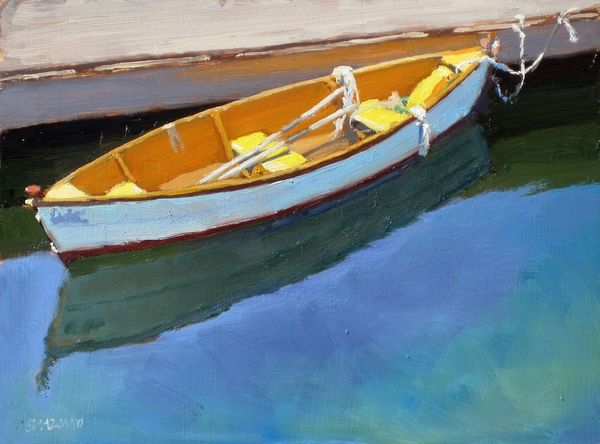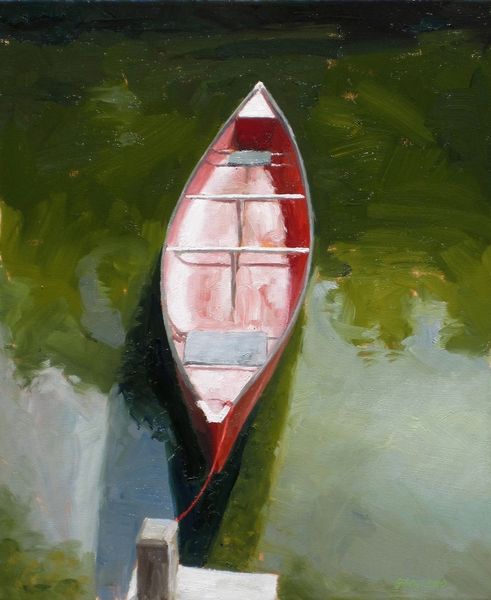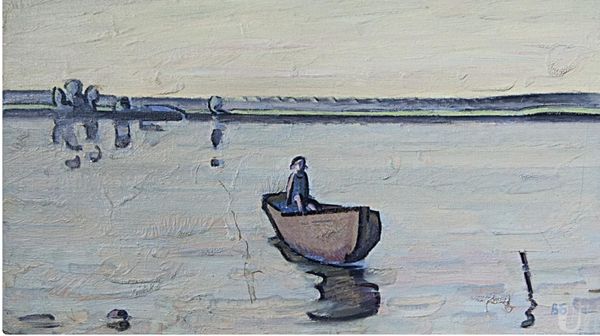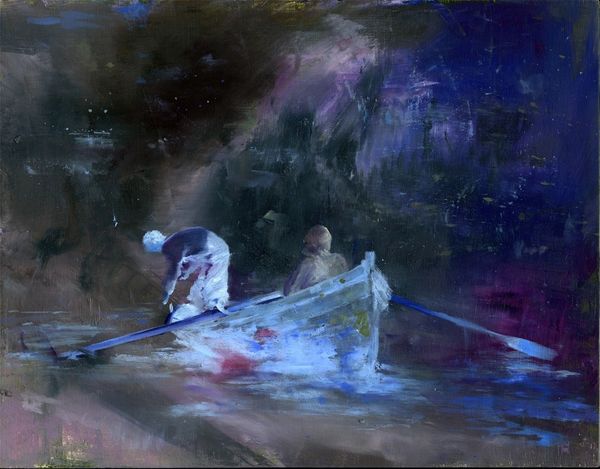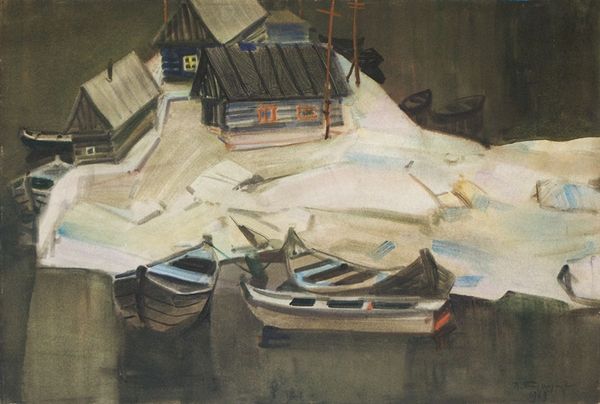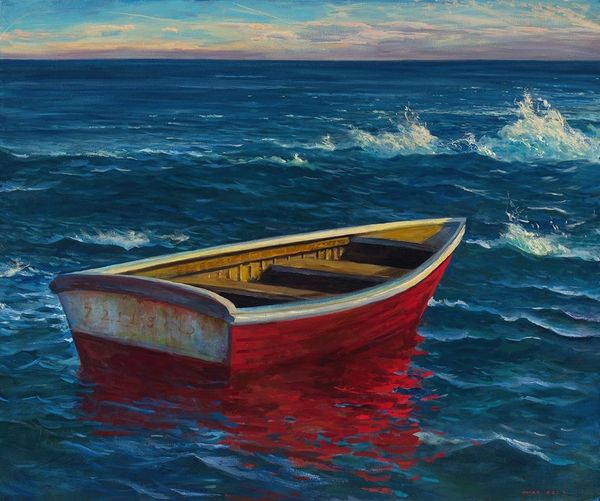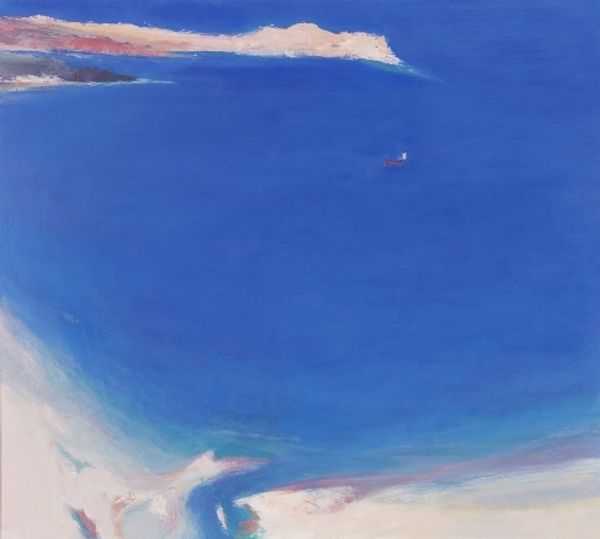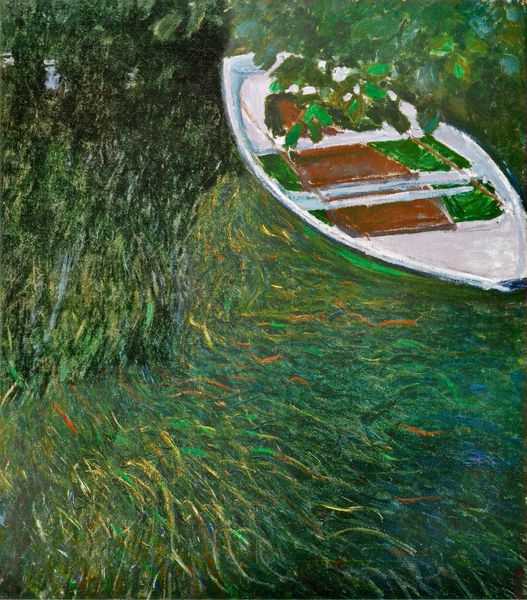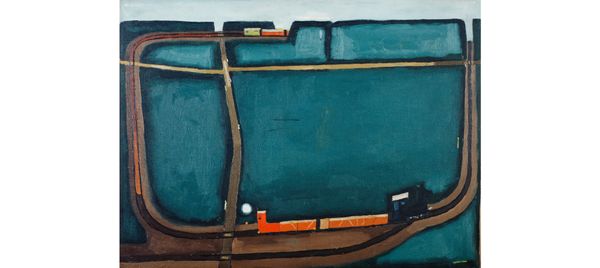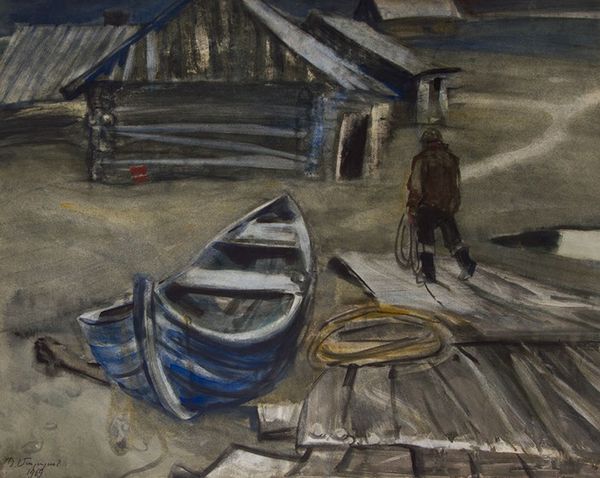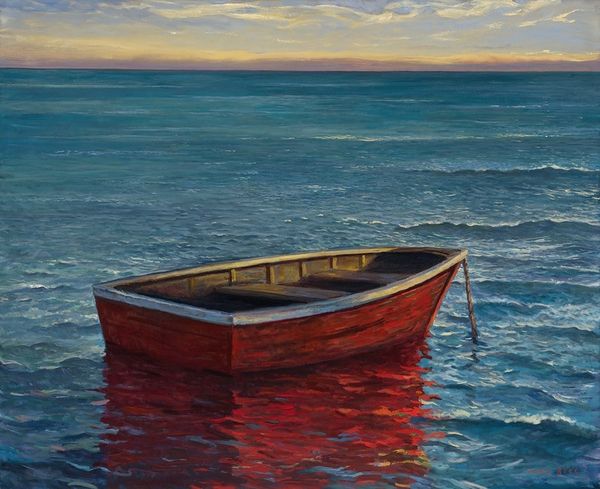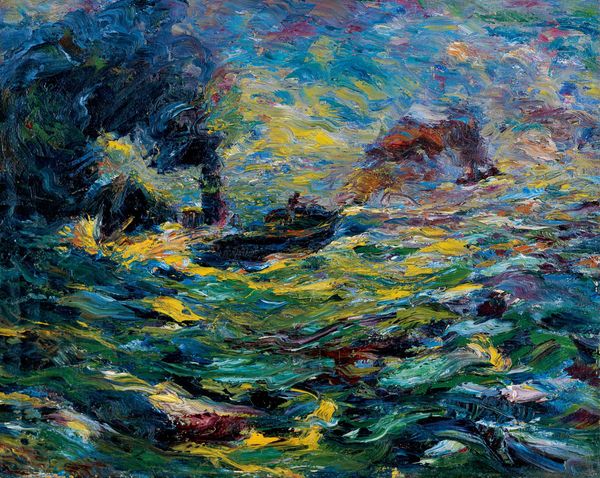
painting, acrylic-paint
#
boat
#
contemporary
#
painting
#
landscape
#
acrylic-paint
#
figuration
#
acrylic on canvas
Copyright: Panayiotis Tetsis,Fair Use
Curator: What a striking piece. "Boat," rendered in acrylic on canvas by Panayiotis Tetsis in 1978, presents us with a single boat adrift on dark waters. Editor: It feels so isolated, almost melancholic. The muted blue of the boat against that deep, dark water creates such a stark contrast. It evokes a sense of solitude, doesn’t it? Curator: Absolutely. Tetsis was painting during a period of significant political and social change in Greece, following the collapse of the military junta. This isolation could reflect a broader feeling of uncertainty and reflection within Greek society at the time. Editor: I see that. Boats themselves are rich with symbolism. They often represent journeys, transitions, sometimes even escape or refuge. Is there any evidence that the artist specifically used watercraft with intention? Curator: Tetsis, belonging to the Greek diaspora, often depicted scenes reflecting his Greek identity. Watercraft have a specific tie to the sea and maritime ventures in the identity of the Greek state through centuries of maritime trade. There is certainly evidence, thus, for him working within these broad cultural trends. The work was painted nearly a decade after his return to Greece. This could also represent a returning to his home or to memories of his home. Editor: And that dark water—so still, but also potentially treacherous. It serves as a counterpoint to the delicate light blue of the boat. Is there something intentional to using darkness so dominantly, or might it be part of the aesthetic? Curator: Probably some of both. Dominance of dark colors in painting had increased for a decade or two by the time of the painting, and using such elements in ways which allow the light of the craft itself to pop. Water might even stand for memory itself. Editor: The reflection of the boat in the water below is particularly poignant, it's incomplete, like a ghostly reminder. It mirrors, but also distorts. It gives an almost dreamlike effect. Curator: Right, that mirroring introduces an ethereal dimension. It may also reflect how artists like Tetsis grapple with memory, history and a longing for cultural heritage. Editor: Yes, the memory or aspiration might also mirror, or indeed, reflect the present reality of a society, as well. Well, it is certainly evocative. Curator: Indeed, and it allows us to dive into the rich emotional and historical subtexts the artist might want to be presenting.
Comments
No comments
Be the first to comment and join the conversation on the ultimate creative platform.
